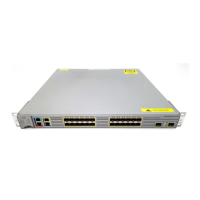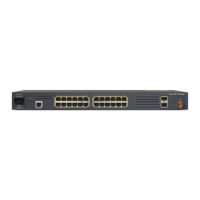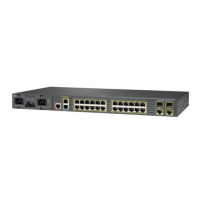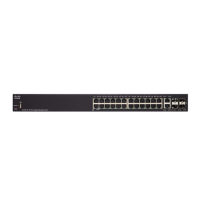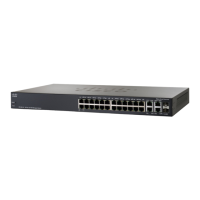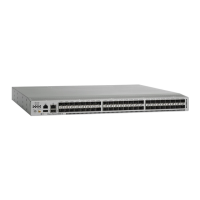28-7
Cisco ME 3800X and 3600X Switch Software Configuration Guide
OL-23400-01
Chapter 28 Configuring EtherChannels
Understanding EtherChannels
With destination-MAC address forwarding, when packets are forwarded to an EtherChannel, they are
distributed across the ports in the channel based on the destination-host MAC address of the incoming
packet. Therefore, packets to the same destination are forwarded over the same port, and packets to a
different destination are sent on a different port in the channel.
The switch supports load distribution based on the destination host MAC address supports for only four
ports per EtherChannel. When you configure EtherChannel destination-MAC address load balancing,
the traffic is balanced only among four ports in the channel group.If you configure more than four ports
in an EtherChannel with destination host MAC address load distribution, only four of the ports receive
distributed traffic. This limitation does not apply to the other load distribution methods.
With source-and-destination MAC address forwarding, when packets are forwarded to an EtherChannel,
they are distributed across the ports in the channel based on both the source and destination MAC
addresses. This forwarding method, a combination source-MAC and destination-MAC address
forwarding methods of load distribution, can be used if it is not clear whether source-MAC or
destination-MAC address forwarding is better suited on a particular switch. With source-and-destination
MAC-address forwarding, packets sent from host A to host B, host A to host C, and host C to host B
could all use different ports in the channel.
With source-IP-address-based forwarding, when packets are forwarded to an EtherChannel, they are
distributed across the ports in the EtherChannel based on the source-IP address of the incoming packet.
Therefore, to provide load-balancing, packets from different IP addresses use different ports in the
channel, but packets from the same IP address use the same port in the channel.
With destination-IP-address-based forwarding, when packets are forwarded to an EtherChannel, they are
distributed across the ports in the EtherChannel based on the destination-IP address of the incoming
packet. Therefore, to provide load-balancing, packets from the same IP source address sent to different
IP destination addresses could be sent on different ports in the channel. But packets sent from different
source IP addresses to the same destination IP address are always sent on the same port in the channel.
With source-and-destination IP address-based forwarding, when packets are forwarded to an
EtherChannel, they are distributed across the ports in the EtherChannel based on both the source and
destination IP addresses of the incoming packet. This forwarding method, a combination of source-IP
and destination-IP address-based forwarding, can be used if it is not clear whether source-IP or
destination-IP address-based forwarding is better suited on a particular switch. In this method, packets
sent from the IP address A to IP address B, from IP address A to IP address C, and from IP address C to
IP address B could all use different ports in the channel.
Different load-balancing methods have different advantages, and the choice of a particular
load-balancing method should be based on the position of the switch in the network and the kind of
traffic that needs to be load-distributed. In Figure 28-3, an EtherChannel of four workstations
communicates with a router. Because the router is a single-MAC-address device, source-based
forwarding on the switch EtherChannel ensures that the switch uses all available bandwidth to the router.
The router is configured for destination-based forwarding because the large number of workstations
ensures that the traffic is evenly distributed from the router EtherChannel.
Use the option that provides the greatest variety in your configuration. For example, if the traffic on a
channel is going only to a single MAC address, using the destination-MAC address always chooses the
same link in the channel. Using source addresses or IP addresses might result in better load balancing.
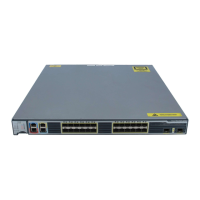
